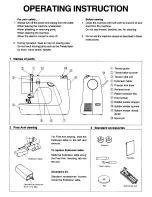
BM-500GE / BB-500GE
14
Start Point
End Point
Length
Start Point
End Point
Length
6.1.1
LUT (Cross Point Switch)
The LUT works as a cross-point switch which allows connecting inputs and outputs freely. The
signals LVAL_IN, DVAL_IN, FVAL_IN and EEN_IN all originate from the camera timing circuit.
On this diagram, Trigger 0 is used for exposure and Trigger 1 is used for Delayed Readout.
The Time Stamp Reset signal can reset the time stamp specified in GigE Vision Format. This
signal can be used when time stamps from several cameras connected are coincident with
each other.
6.1.2
12-bit Counter
The camera pixel clock can be used as a source. The counter has a “Divide by N”, where N
has the range 1 through 4096, allowing a wide range of clock frequencies to be programmed.
Setting Value 0 is bypass, setting value 1 is 1/2 dividing and setting value 4095 is 1/4096
dividing. The pixel clock for BM-500GE/BB-500GE is 60 MHz.
6.1.3
Pulse Generators (0 to 1)
Each pulse generator consists of a 19-bit counter. The behavior of these signals is defined by
their pulse width, start point and end point.
The pulse generator signals can be set in either triggered or periodic mode.
In triggered mode, the pulse is triggered by the rising edge/falling edge/high level or low
level of the input signal. In periodic mode, the trigger continuously generates a signal that is
based on the configured pulse width, starting point and end point.
Each pulse generator operates at the frequency created in the 12-bit counter. As the pixel
clock (60 MHz) is used as the main frequency , the frequency of pulse generator is 60MHz to
14.648 KHz.
Fig.8 Pulse generated
The following drawing is an example of settings.
FVAL is used for the input of a pulse generator 0 and the clock after the rising edge of FVAL
counts 100 clocks for the high period of the pulse and 102 clocks for the pulse length.
As 2400 is for Clock Pre-scaler, the output of 12 bit counter is 25 KHz, which is 40µs.
Summary of Contents for BM-500 GE
Page 19: ...BM 500GE BB 500GE 19...






































